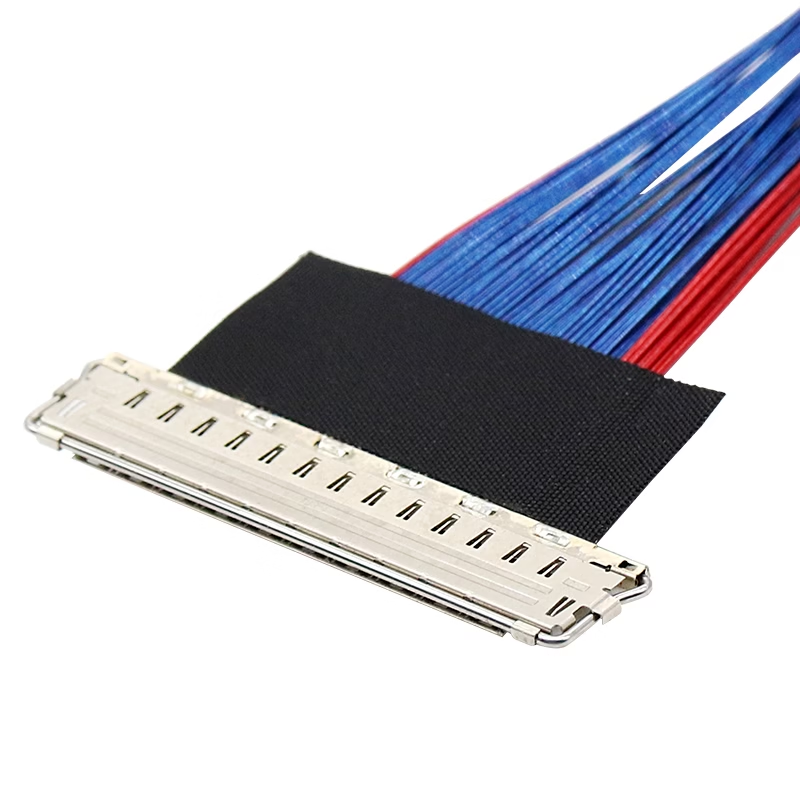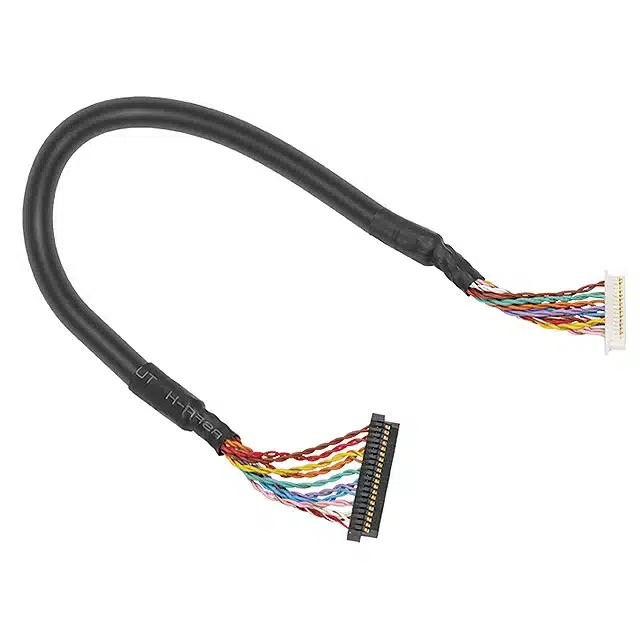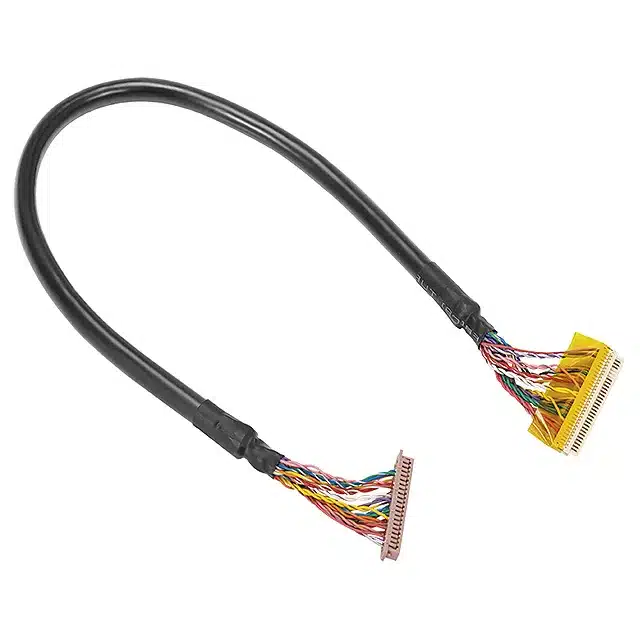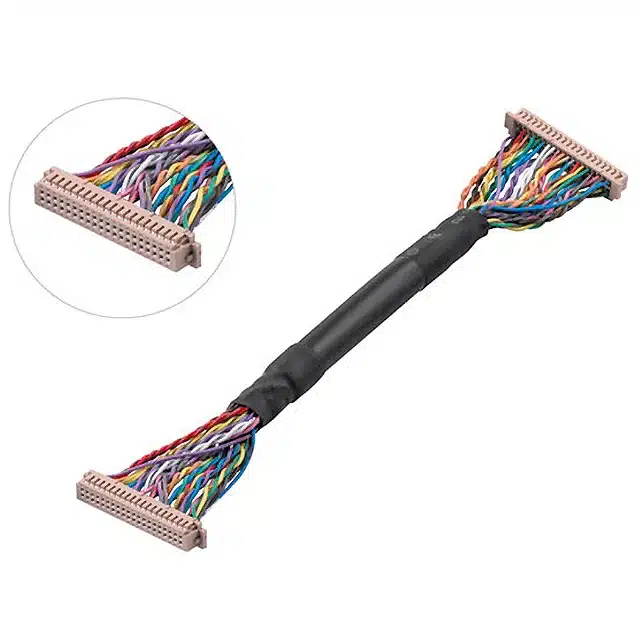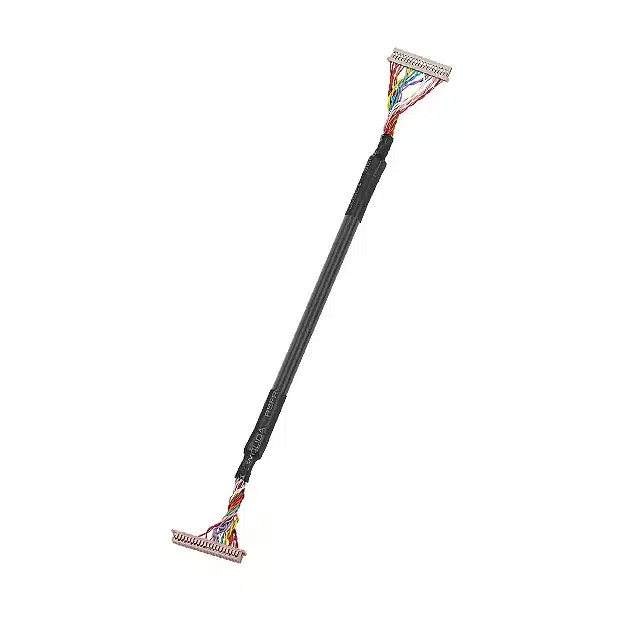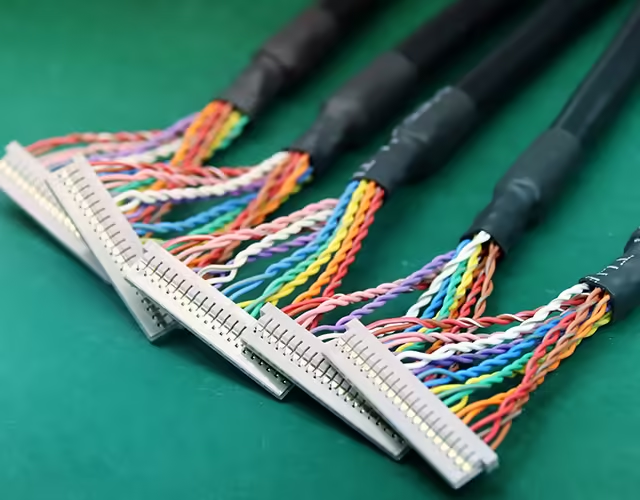
LVDS cables transmit data over a pair of differential PCB wires or balanced cables, which can reach transmission rates of hundreds or even thousands of gigabits per second (Gbps). Engineers can design mixed-signal systems using LVDS, a low-amplitude differential signaling analog technology.
Romtronic is a Chinese manufacturer with extensive experience in customizing LVDS cable assemblies. We can provide custom solutions or equivalent assemblies tailored to customer specifications, saving time and cost.
Our Product Range
Our LVDS cable manufacturing process
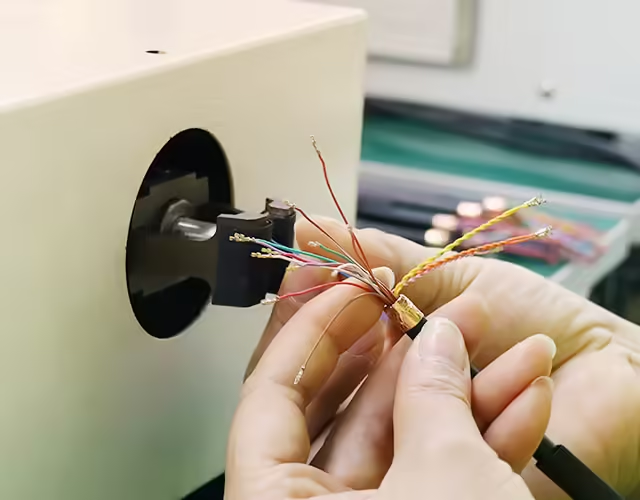
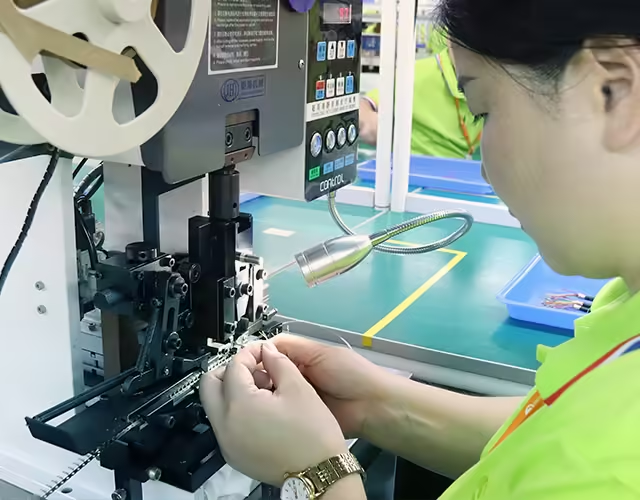
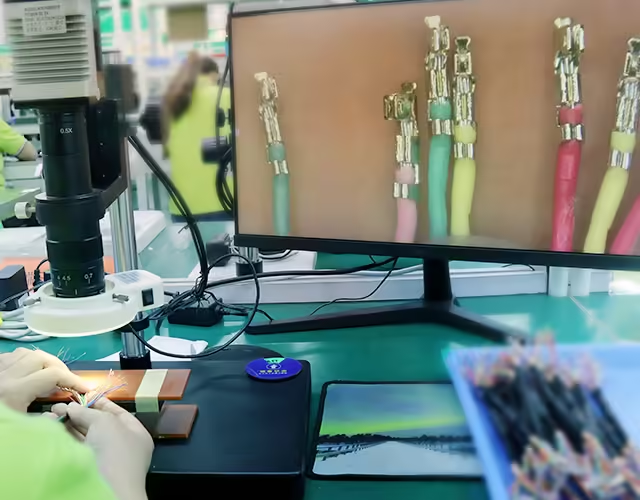
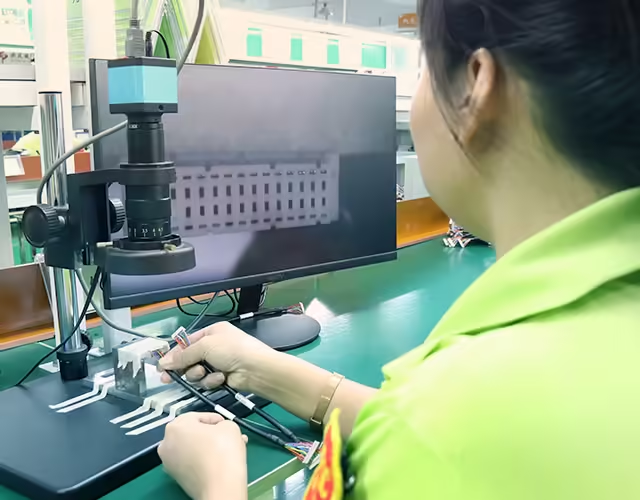
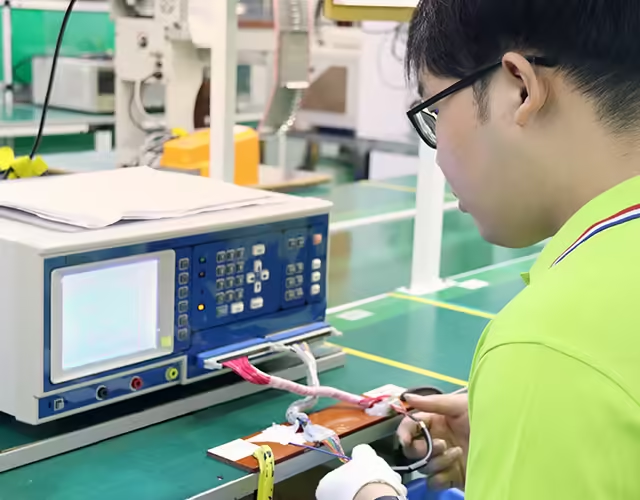
Advantages of our customized LVDS cables
- Customized high-end complex LVDS cable assemblies are available.
- Accepting small-batch production orders at affordable prices.
- Fast delivery: All processes, including soldering, over-moulding, and performance testing, are completed in-house, typically within 10-15 working days.
- We have passed the UL, CE, and USB4 TID certification audit reports. To meet any special custom requirements, we can offer a variety of connector configurations, cable types, and cable jacket material colour options.
You may want to know more about LVDS cables
LVDS Components
The most basic LVDS devices are the LVDS driver and receiver. The LVDS driver consists of a current source that drives the differential wire pair with a current of 3.5 mA. The LVDS receiver has a high input impedance, so the current at the driver output is 100 Ω, matching the resistor value, and the voltage at the receiver input is approximately 350 mV. (A current source with a constant current characteristic and a termination resistance between 100 and 120 Ω can produce a voltage from 3.5mA x 100 = 350mV to 3.5mA x 120 = 420mV.
When the driver flips, it changes the direction of current flow through the resistor, resulting in valid logic “1” and logic “0” states. It needs time to change from the logic “0” to the “1” level. Since the physical level of the LVDS signal varies between 0.85 and 1.55V, the time required to change from a logic “0” level to a logic “1” level is much faster than the TTL level. The time from a logic “0” level to a logic “1” level is quicker than the TTL level, so the LVDS cable is more suitable for transmitting high-speed signals. Due to the low voltage and low power consumption of LVDS cables, they are more ideal for transmitting high-speed signals.

LVDS Electrical Characteristics
Two standards define LVDS technology: ANSI/TIA/EIA644 (approved in November 1995) and IEEE P1596.3 (approved in March 1996). Both standards focus on determining the electrical characteristics of LVDS.
Both standards define the electrical characteristics of LVDS, including:
- Low voltage, low swing amplitude(~350 mV), high speed. The LVDS physical interface utilizes a 1.2V bias voltage as a reference, providing a swing amplitude of approximately 350 mV (0.85- 1.55V). The low-current drive mode enables high-speed transmission at a maximum rate of 655 Mb/s. The theoretical limit rate on the undistorted channel can reach 1.923 Gb/s, which meets the theoretical limit rate of the undistorted channel recommended by ANSI/TIA/EIA-644.
- Low power consumption. The constant source drive limits the output current to approximately 3.5 mA, minimizing spike disturbances during frequency hopping and resulting in low power consumption. This enables further improvements in IC density, PCB board efficiency, and costs.
- It has a relatively slow edge rate (dV/dt is approximately 0.300V/0.3ns, i.e., 1V/ns), adopts differential transmission, dramatically reduces signal noise and EMI, and exhibits strong anti-interference capabilities.
Therefore, LVDS exhibits excellent characteristics, including high speed, ultra-low power consumption, low noise, and low cost.
Application of LVDS cable
LVDS cables are mainly used to connect laptop motherboards and panels to transmit power and signals.
Application of LVDS products in other fields
- Medical equipment cables are characterized by their ability to transmit signals accurately and reliably.
- Mobile phone motherboards and panels are connected to transmit signals, characterized by high transmission efficiency, stable impedance, and high bending strength.
- It is also used in digital video (DV), digital cameras, LCDs, car navigation systems, and more.
Frequently Asked Questions (FAQs)
Q1: What types of LVDS cables do you manufacture?
We produce custom LVDS (Low Voltage Differential Signaling) cables for a wide range of applications including LCD displays, industrial monitors, automotive infotainment systems, and medical imaging equipment.
Q2: Can you support different LVDS connector types and pinouts?
Yes. We offer full customization with a variety of connector options such as Hirose, JST, Molex, I-PEX, and customized pinouts based on your design specs or schematics.
Q3: Are your LVDS cables suitable for high-speed and low-interference environments?
Absolutely. Our LVDS cables are designed with twisted pairs, impedance control, and shielding options to ensure stable signal transmission and minimal electromagnetic interference (EMI).
Q4: Do you provide prototyping or small-batch services for LVDS cables?
Yes. We’re flexible and can support both rapid prototyping and small-volume orders, ideal for R&D or pilot production before scaling up.
Q5: Can you assist with cable design for specific display modules or panel manufacturers?
Definitely. Just let us know the panel model or display interface details—we can help design and manufacture the right LVDS cable to ensure full compatibility and performance.
Get in Touch for Custom LVDS Cable Solutions
Romtronic provides custom LVDS (Low Voltage Differential Signaling) cables for high-speed, low-power data transmission in applications such as displays, embedded systems, industrial equipment, and automotive electronics. We offer flexible configurations, shielding options, and connector choices to match your system requirements.
To request a quote or discuss your LVDS cable project, feel free to contact us through the form on this page or using the details below — our team will respond within 12 hours with tailored support.
📧 Email: info@romtronic.com
📞 Phone: (+86) 199-2816-5824
Romtronic delivers reliable, high-performance LVDS cable solutions for customers worldwide.




